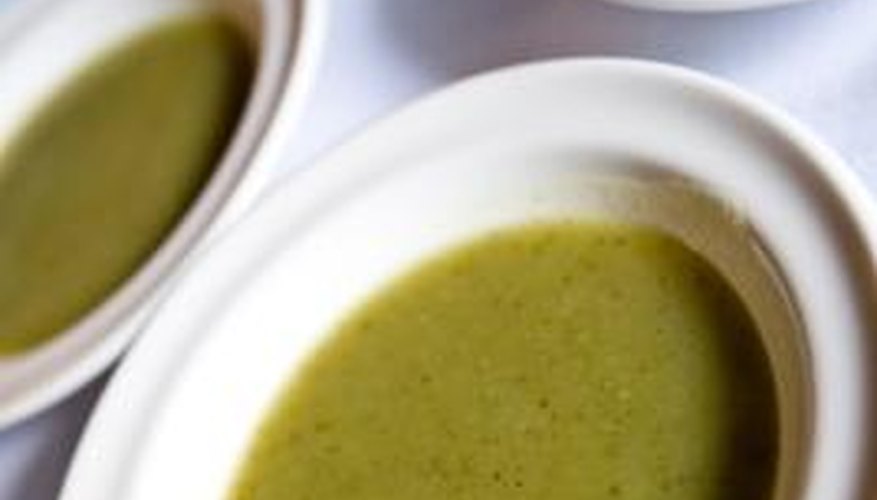Pasteurising is the process used to kill any micro-organisms in milk, eggs and juices. It requires a product to be cooked to 73.9 degrees Celsius, according to "The Science of Good Food." Soups are easier to pasteurise at home than milk because even those with cream added can be brought to temperatures higher than those needed for pasteurisation. They follow the home kitchen pasteurisation method of pasteurising, cooling and packaging, which makes the soup safe to eat.
- Pasteurising is the process used to kill any micro-organisms in milk, eggs and juices.
- They follow the home kitchen pasteurisation method of pasteurising, cooling and packaging, which makes the soup safe to eat.
Heat the soup in a large pot over medium high heat.
Use a food thermometer to determine when the soup reaches 73.9 degrees C. This temperature determines when the soup is pasteurised and any bacteria is killed.
Remove the soup from the heat and pour it into a shallow, resealable container. Leave 1 inch of space at the top of the container.
Refrigerate the soup immediately in the sealed container, for up to one week.
